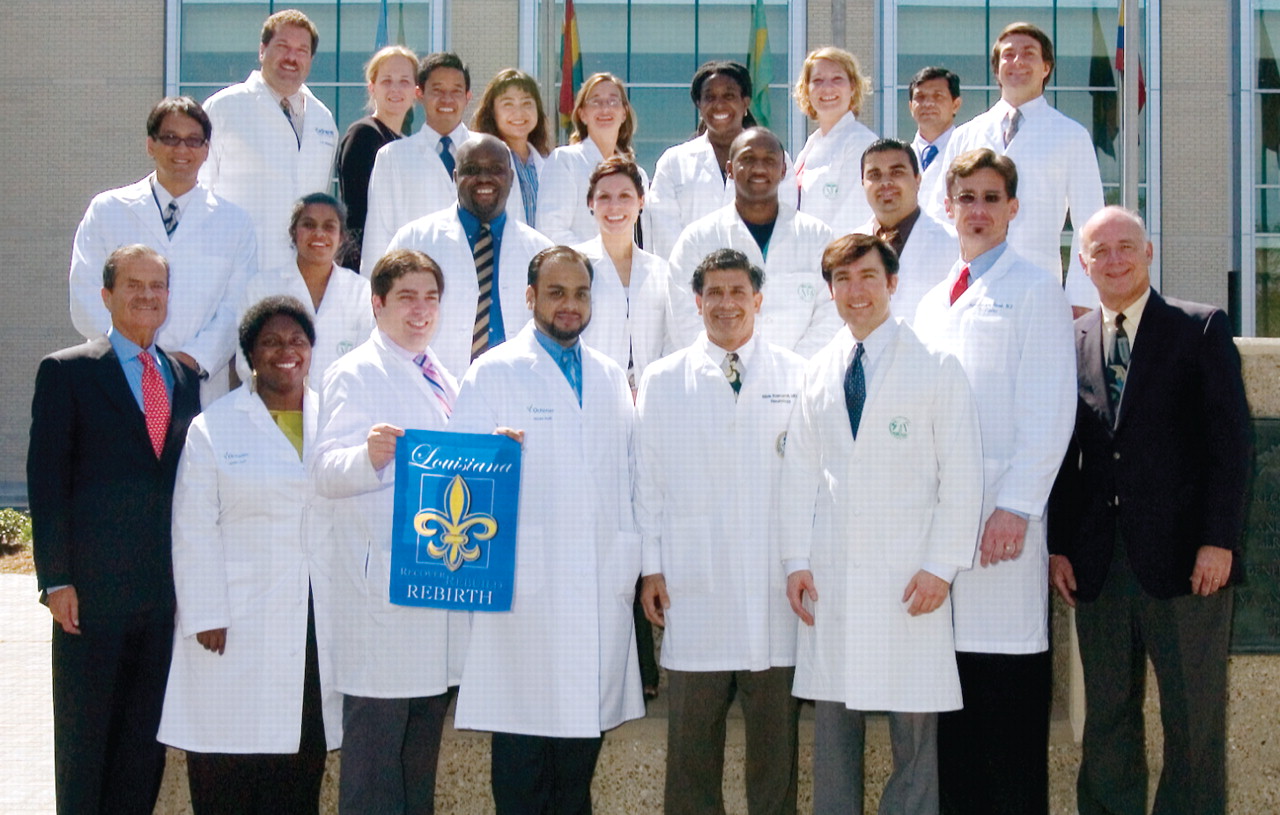Neither Wind nor Water Halted N.O. Residency

More than a year and a half after being in the path of the most devastating hurricane in American history, the adult psychiatry training program at Louisiana State University (LSU) Health Sciences Center School of Medicine is“ 100 percent.”
Actually, like much else in New Orleans, the LSU/Alton Ochsner Adult Psychiatry Residency Program is still recovering from the effects of Hurricane Katrina. But the program is the latest to join APA's 100% Club honoring training programs in which all residents have signed on as members of APA.
A photo of each program that joins the 100% Club is turned into a poster and mailed to every medical school in the United States and Canada to encourage medical students to join APA. In addition, programs in the 100% Club receive a major textbook from American Psychiatric Publishing Inc. and a free online subscription toFocus: The Journal of Lifelong Learning for each year that all of their residents are APA members.
For residents at LSU/Ochsner, the distinction is especially important in a time when signs and symbols of unity and cohesion have been critical. Since the storm that closed Charity Hospital, the large public hospital where much of LSU/Ochsner's training took place, patients and residents have been placed at hospitals throughout the greater New Orleans area, sometimes as far as 60 or 70 miles away.
At the same time, the residency program—like much of its city—has been busy reinventing itself.
“We've never closed,” training director Margaret Baier, M.D., told Psychiatric News. “So it has sometimes been a little messy, like remodeling your house while you are still living in it. But it has been very rewarding, and residents have had a lot of input in all kinds of things. The residents feel very involved, and some of them say they have become much more politically active as a result of the storm, advocating for their patients.
“Our residents have had to advocate for themselves for their continued training and for their patients, to open public psychiatric beds,” Baier said. “So many of them have become very involved and are still involved in town-hall community meetings about reopening of beds.”
Twenty months after Katrina, Baier said the biggest challenge remains matching patients with clinicians and resources.
“Administratively it has been exhausting, but an education in itself in learning on the job how to move patients into a new hospital, get residents credentialed, and build cohesion with a new team of doctors and nurses and new policies and procedures.”
And Baier said the push to get all the residents to become members of APA has been viewed by residents and faculty alike as a demonstration of unity amid disarray and a commitment to the future.
“There is a lot of misinformation out about New Orleans and about psychiatry and individual programs in the city,” Baier told Psychiatric News. “The desire to be part of the 100% Club is a way of saying that we are here and we are healing.”
Baier said that the psychiatry residency's partnership with the Ochsner Foundation Clinic, which began in 1999, was critical in helping the program weather the storm.
“Ochsner is a community hospital in the suburbs, one parish over but worlds apart in terms of the background of the patients,” Baier said.“ Generally speaking, we see the same psychiatric illnesses but with very different comorbidities, different resources, and a different presentation.”
When the public hospital closed after flooding, Ochsner remained open, allowing patients to be transferred and residents to continue their training there.
Baier said that because of the geographic dispersal of the training program, residents and faculty have learned to rely more on telepsychiatry, video conferencing, and text messaging than ever before.
“We are continuing to rebuild,” she said. “The way our program looks today is not the way it will look tomorrow.”
But those who have remained after the calamity of Hurricane Katrina are a hardy lot, and the challenges of life after the storm have engendered a pioneering spirit.
“The people who are here are here by choice,” Baier said.“ They have a vision and are working hard to put that vision in place. It's a good opportunity to build a new, excellent health care system and a chance not to rebuild the same old problems.” ▪



